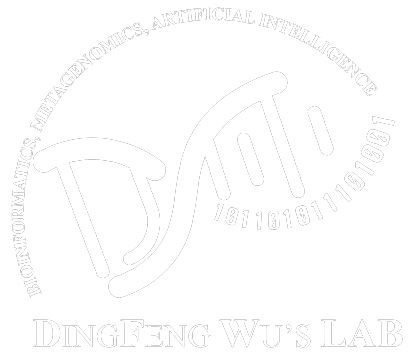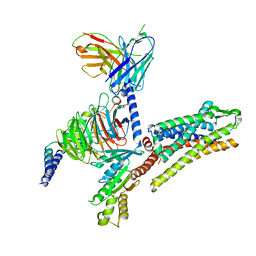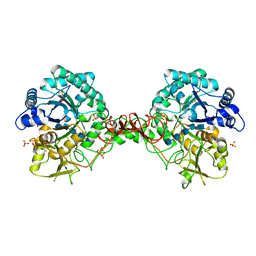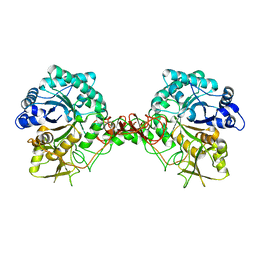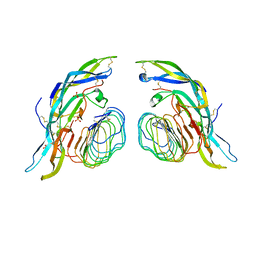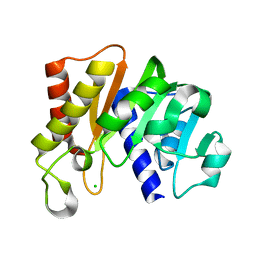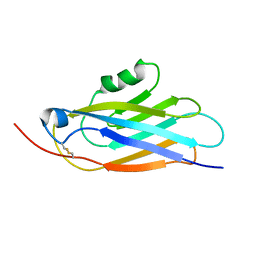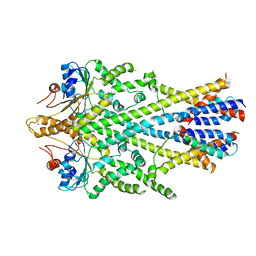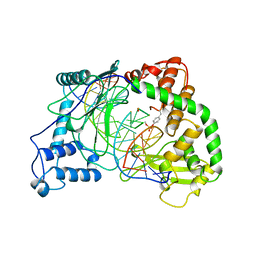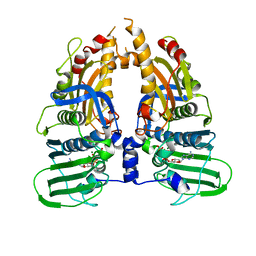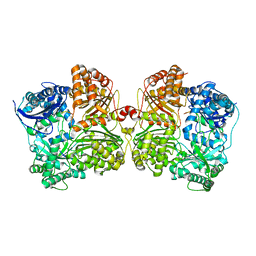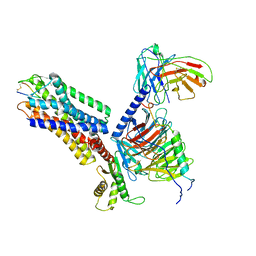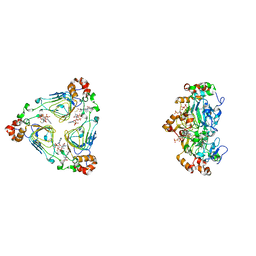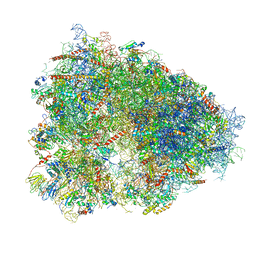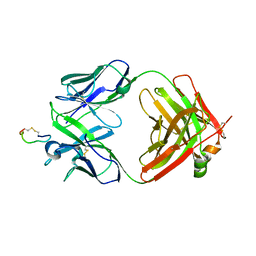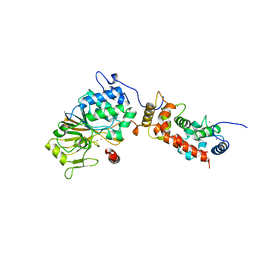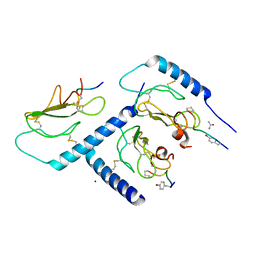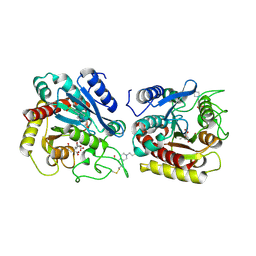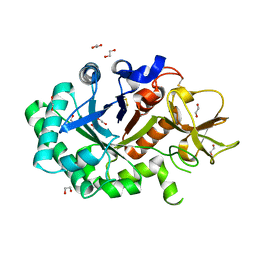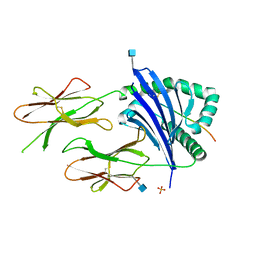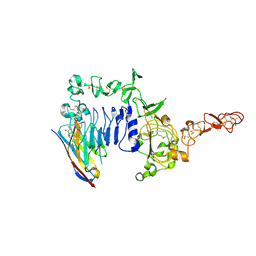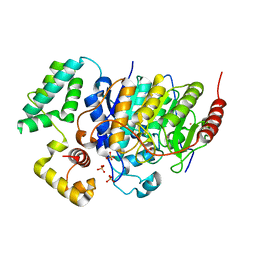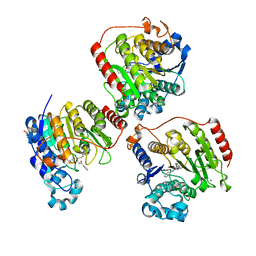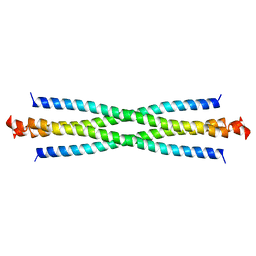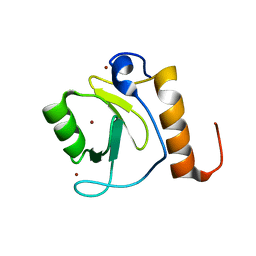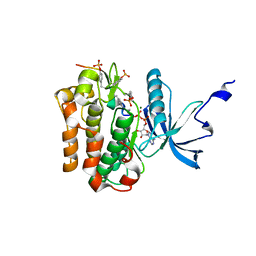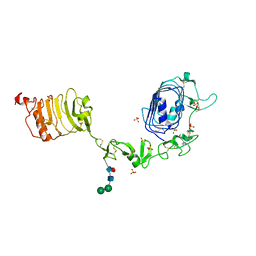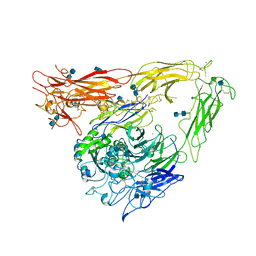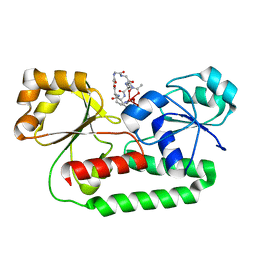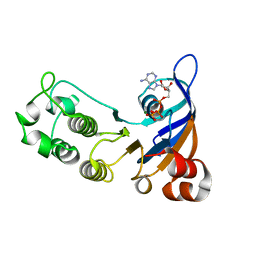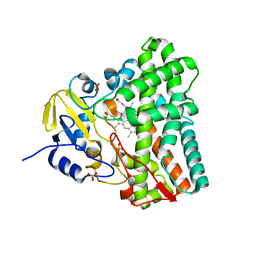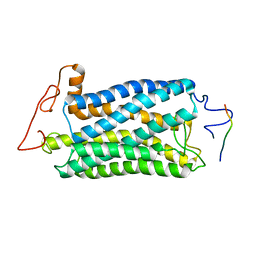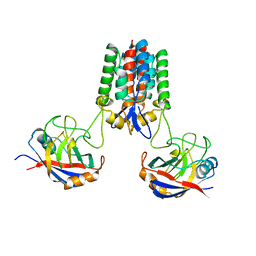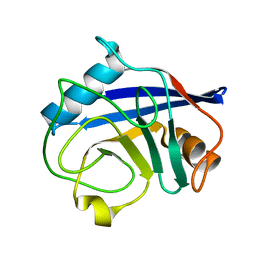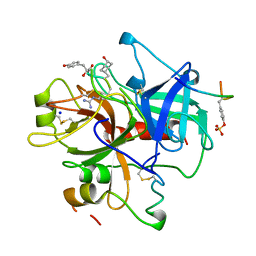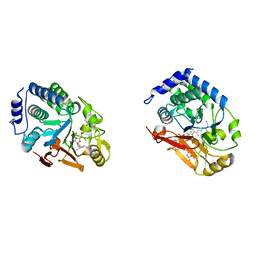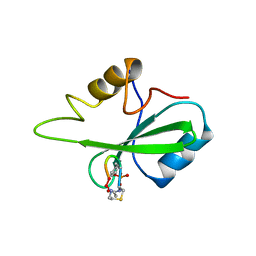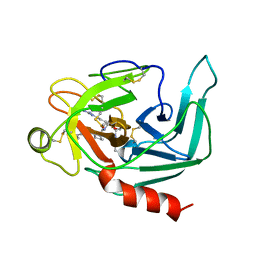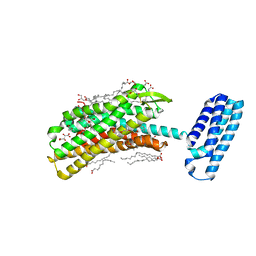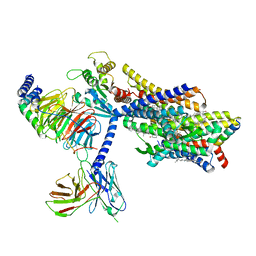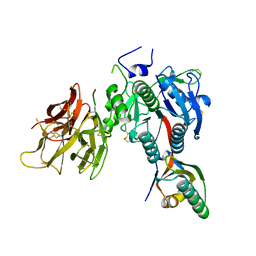Targets
Cyclic peptides have a larger area of contact with targets than small-molecule drugs. Therefore, they have higher specificity, target-binding affinity, and fewer side effects.
T00001 Surface glycoproteins (Gn/Gc) 85
Organism :
Protein > Envelope glycoprotein> Surface glycoproteins (Gn/Gc)T00002 1,3-beta-glucan synthase component FKS1 52
Organism :Aspergillus niger (strain CBS 513.88 / FGSC A1513)
Protein > Synthase> 1,3-beta-glucan synthase component FKS1Uniprot: A2QLK4
T00003 Somatostatin receptor type 2 8
Organism :Homo sapiens(Human)
Protein > Somatostatin receptor> Somatostatin receptor type 2Uniprot: P30874 PDB: 7T10 7T11 7T10 7UL5 7T10 7T11 7T10 7WIC 7T10 7T11 7T10 7UL5 7T10 7T11 7T10
T00004 Somatostatin receptor type 5 6
Organism :Homo sapiens(Human)
Protein > Somatostatin receptor> Somatostatin receptor type 5Uniprot: P35346
T00007 Somatostatin receptor type 1 4
Organism :Homo sapiens(Human)
Protein > Somatostatin receptor> Somatostatin receptor type 1Uniprot: P30872
T00008 Somatostatin receptor type 3 4
Organism :Homo sapiens(Human)
Protein > Somatostatin receptor> Somatostatin receptor type 3Uniprot: P32745
T00010 Follicle-stimulating hormone receptor 3
Organism :Homo sapiens(Human)
Protein > Hormone receptor> Follicle-stimulating hormone receptorUniprot: P23945 PDB: 1XWD 4AY9 1XWD 4MQW 1XWD 4AY9 1XWD 8I2G 1XWD 4AY9 1XWD 4MQW 1XWD 4AY9 1XWD
T00012 16S/23S rRNA (cytidine-2'-O)-methyltransferase TlyA 2
Organism :Mycobacterium tuberculosis (strain ATCC 25618 / H37Rv)
Protein > Methyltransferase> 16S/23S rRNA (cytidine-2'-O)-methyltransferase TlyAT00013 Alpha-2-macroglobulin 2
Organism :Homo sapiens(Human)
Protein> Alpha-2-macroglobulinUniprot: P01023 PDB: 1BV8 2P9R 1BV8 6TAV 1BV8 2P9R 1BV8 7O7L 1BV8 2P9R 1BV8 6TAV 1BV8 2P9R 1BV8
T00014 C55-isoprenyl pyrophosphate 2
Organism :Gram positive and gram negative bacteria
Small molecule> C55-isoprenyl pyrophosphateT00015 Calcineurin subunit B type 2 2
Organism :Homo sapiens(Human)
Protein > Calcineurin b homologous proteins> Calcineurin subunit B type 2Uniprot: Q96LZ3
T00016 Calcium signal-modulating cyclophilin ligand 2
Organism :Homo sapiens(Human)
Protein> Calcium signal-modulating cyclophilin ligandT00018 DNA topoisomerase 1 2
Organism :Homo sapiens(Human)
Protein > DNA topoisomerase> DNA topoisomerase 1Uniprot: P11387 PDB: 1A31 1A35 1A31 1A36 1A31 1A35 1A31 1EJ9 1A31 1A35 1A31 1A36 1A31 1A35 1A31
T00019 DNA topoisomerase 2 2
Organism :Homo sapiens(Human)
Protein group > DNA topoisomerase> DNA topoisomerase 2Uniprot: P11388 PDB: 1ZXM 1ZXN 1ZXM 4FM9 1ZXM 1ZXN 1ZXM 4R1F 1ZXM 1ZXN 1ZXM 4FM9 1ZXM 1ZXN 1ZXM
T00020 Insulin-degrading enzyme 2
Organism :Homo sapiens(Human)
Protein > Metalloproteinase> Insulin-degrading enzymeUniprot: P14735 PDB: 2G47 2G48 2G47 2G49 2G47 2G48 2G47 2G54 2G47 2G48 2G47 2G49 2G47 2G48 2G47
T00021 Somatostatin receptor type 4 2
Organism :Homo sapiens(Human)
Protein > Somatostatin receptor> Somatostatin receptor type 4T00022 Streptogramin A acetyltransferase 2
Organism :Enterococcus faecium
Protein > Acetyltransferase> Streptogramin A acetyltransferaseUniprot: P50870 PDB: 1KHR 1KK4 1KHR 1KK5 1KHR 1KK4 1KHR 1KK6 1KHR 1KK4 1KHR 1KK5 1KHR 1KK4 1KHR
T00023 1,3-beta-glucan synthase component GSC2 1
Organism :Baker's yeast
Protein > Synthase> 1,3-beta-glucan synthase component GSC2Uniprot: P40989
T00024 23S ribosomal RNA 1
Organism :Enteric bacteria and other eubacteria
Nucleotide > RNA> 23S ribosomal RNAT00025 50S ribosomal protein L10 1
Organism :Shigella flexneri
Protein > Ribosomal protein> 50S ribosomal protein L10Uniprot: P0A7J6
T00026 50S ribosomal protein L22 1
Organism :Escherichia coli O157:H7
Protein > Ribosomal protein> 50S ribosomal protein L22Uniprot: P61177
T00027 60S ribosomal protein L37 1
Organism :Homo sapiens(Human)
Protein > Ribosomal protein> 60S ribosomal protein L37Uniprot: P61927 PDB: 4UG0 4V6X 4UG0 5AJ0 4UG0 4V6X 4UG0 5LKS 4UG0 4V6X 4UG0 5AJ0 4UG0 4V6X 4UG0
T00028 Atrial natriuretic peptide receptor 1 1
Organism :Homo sapiens(Human)
Protein > Natriuretic peptide receptor> Atrial natriuretic peptide receptor 1Uniprot: P16066
T00029 B-lymphocyte antigen CD20 1
Organism :Homo sapiens(Human)
Protein > Membrane protein> B-lymphocyte antigen CD20T00030 Calcineurin subunit B type 1 1
Organism :Homo sapiens(Human)
Protein > Calcineurin b homologous proteins> Calcineurin subunit B type 1Uniprot: P63098 PDB: 1AUI 1M63 1AUI 1MF8 1AUI 1M63 1AUI 2P6B 1AUI 1M63 1AUI 1MF8 1AUI 1M63 1AUI
T00031 Calcitonin receptor 1
Organism :Homo sapiens(Human)
Protein > Calcitonin receptor> Calcitonin receptorUniprot: P30988 PDB: 5II0 5UZ7 5II0 6NIY 5II0 5UZ7 5II0 6PFO 5II0 5UZ7 5II0 6NIY 5II0 5UZ7 5II0
T00032 Carboxypeptidase A1 1
Organism :Homo sapiens(Human)
Protein > Hydrolase> Carboxypeptidase A1Uniprot: P15085 PDB: 2V77 3FJU 2V77 4UEE 2V77 3FJU 2V77 4UEZ 2V77 3FJU 2V77 4UEE 2V77 3FJU 2V77
T00033 Chitotriosidase-1 1
Organism :Homo sapiens(Human)
Protein > Hydrolase> Chitotriosidase-1Uniprot: Q13231 PDB: 1GUV 1HKI 1GUV 1HKJ 1GUV 1HKI 1GUV 1HKK 1GUV 1HKI 1GUV 1HKJ 1GUV 1HKI 1GUV
T00034 Elongation factor 1-alpha 2 1
Organism :Homo sapiens(Human)
Protein> Elongation factor 1-alpha 2T00035 Heat-stable enterotoxin receptor 1
Organism :Homo sapiens(Human)
Protein > Enterotoxin receptor> Heat-stable enterotoxin receptorUniprot: P25092
T00036 HER2(Human epidermal growth factor receptor 2) 1
Organism :Homo sapiens(Human), Camelus dromedarius
Protein > Growth factor receptor> HER2(Human epidermal growth factor receptor 2)T00037 Histone deacetylase 1
Organism :Homo sapiens(Human)
Protein group > Histone deacetylase> Histone deacetylaseUniprot: Q13547 PDB: 4BKX 5ICN 4BKX 6Z2J 4BKX 5ICN 4BKX 6Z2K 4BKX 5ICN 4BKX 6Z2J 4BKX 5ICN 4BKX
T00038 Histone deacetylase 1 1
Organism :Homo sapiens(Human)
Protein > Histone deacetylase> Histone deacetylase 1Uniprot: Q13547 PDB: 4BKX 5ICN 4BKX 6Z2J 4BKX 5ICN 4BKX 6Z2K 4BKX 5ICN 4BKX 6Z2J 4BKX 5ICN 4BKX
T00039 Histone deacetylase 2 1
Organism :Homo sapiens(Human)
Protein > Histone deacetylase> Histone deacetylase 2Uniprot: Q92769 PDB: 3MAX 4LXZ 3MAX 4LY1 3MAX 4LXZ 3MAX 5IWG 3MAX 4LXZ 3MAX 4LY1 3MAX 4LXZ 3MAX
T00040 Histone deacetylase 4 1
Organism :Homo sapiens(Human)
Protein > Histone deacetylase> Histone deacetylase 4Uniprot: P56524 PDB: 2H8N 2O94 2H8N 2VQJ 2H8N 2O94 2H8N 2VQM 2H8N 2O94 2H8N 2VQJ 2H8N 2O94 2H8N
T00041 Histone deacetylase 6 1
Organism :Homo sapiens(Human)
Protein > Histone deacetylase> Histone deacetylase 6Uniprot: Q9UBN7 PDB: 3C5K 3GV4 3C5K 3PHD 3C5K 3GV4 3C5K 5B8D 3C5K 3GV4 3C5K 3PHD 3C5K 3GV4 3C5K
T00042 Insulin receptor 1
Organism :Homo sapiens(Human)
Protein > Insulin receptor> Insulin receptorUniprot: P06213 PDB: 1GAG 1I44 1GAG 1IR3 1GAG 1I44 1GAG 1IRK 1GAG 1I44 1GAG 1IR3 1GAG 1I44 1GAG
T00043 Insulin-like growth factor 1 receptor 1
Organism :Homo sapiens(Human)
Protein > Growth factor receptor> Insulin-like growth factor 1 receptorUniprot: P08069 PDB: 1IGR 1JQH 1IGR 1K3A 1IGR 1JQH 1IGR 1M7N 1IGR 1JQH 1IGR 1K3A 1IGR 1JQH 1IGR
T00044 Integrin beta-3 1
Organism :Homo sapiens(Human)
Protein > Membrane protein> Integrin beta-3Uniprot: P05106 PDB: 1JV2 1KUP 1JV2 1KUZ 1JV2 1KUP 1JV2 1L5G 1JV2 1KUP 1JV2 1KUZ 1JV2 1KUP 1JV2
T00045 Iron(3+)-hydroxamate-binding protein FhuD 1
Organism :Escherichia coli (strain K12)
Protein> Iron(3+)-hydroxamate-binding protein FhuDUniprot: P07822 PDB: 1EFD 1ESZ 1EFD 1K2V 1EFD 1ESZ 1EFD 1K7S 1EFD 1ESZ 1EFD 1K2V 1EFD 1ESZ 1EFD
T00046 Multidrug resistance-associated protein 1 1
Organism :Homo sapiens(Human)
Protein > Membrane protein> Multidrug resistance-associated protein 1T00047 Mycocyclosin synthase 1
Organism :Mycobacterium tuberculosis
Protein > Synthase> Mycocyclosin synthaseUniprot: P9WPP7 PDB: 1N40 1N4G 1N40 2IJ5 1N40 1N4G 1N40 2IJ7 1N40 1N4G 1N40 2IJ5 1N40 1N4G 1N40
T00048 Neurokinin 1 receptor 1
Organism :Homo sapiens(Human)
Protein > Neuropeptide receptor> Neurokinin 1 receptorUniprot: P25103 PDB: 2KS9 2KSA 2KS9 2KSB 2KS9 2KSA 2KS9 6E59 2KS9 2KSA 2KS9 2KSB 2KS9 2KSA 2KS9
T00049 Peptidyl-prolyl cis-trans isomerase A 1
Organism :Homo sapiens(Human)
Protein > Peptidyl-prolyl isomerase> Peptidyl-prolyl cis-trans isomerase AUniprot: P62937 PDB: 1AK4 1AWQ 1AK4 1AWR 1AK4 1AWQ 1AK4 1AWS 1AK4 1AWQ 1AK4 1AWR 1AK4 1AWQ 1AK4
T00050 Peptidyl-prolyl cis-trans isomerase F 1
Organism :Homo sapiens(Human)
Protein > Peptidyl-prolyl isomerase> Peptidyl-prolyl cis-trans isomerase FUniprot: P30405 PDB: 2BIT 2BIU 2BIT 2Z6W 2BIT 2BIU 2BIT 3QYU 2BIT 2BIU 2BIT 2Z6W 2BIT 2BIU 2BIT
T00051 Prothrombin 1
Organism :Homo sapiens(Human)
Protein> ProthrombinUniprot: P00734 PDB: 1A2C 1A3B 1A2C 1A3E 1A2C 1A3B 1A2C 1A46 1A2C 1A3B 1A2C 1A3E 1A2C 1A3B 1A2C
T00052 Serine/threonine-protein phosphatase PP1-gamma catalytic subunit 1
Organism :Homo sapiens(Human)
Protein > Phosphatase> Serine/threonine-protein phosphatase PP1-gamma catalytic subunitUniprot: P36873 PDB: 1IT6 1JK7 1IT6 1U32 1IT6 1JK7 1IT6 2BCD 1IT6 1JK7 1IT6 1U32 1IT6 1JK7 1IT6
T00053 SH2 domain of Grb2(1) 1
Organism :Homo sapiens(Human)
Protein > Protein domain> SH2 domain of Grb2(1)T00054 Somatostatin receptor 1
Organism :Homo sapiens(Human)
Group > Somatostatin receptor> Somatostatin receptorT00055 Trypsin-1 1
Organism :Homo sapiens(Human)
Protein > Hydrolase> Trypsin-1Uniprot: P07477 PDB: 1FXY 1TRN 1FXY 2RA3 1FXY 1TRN 1FXY 4WWY 1FXY 1TRN 1FXY 2RA3 1FXY 1TRN 1FXY
T00056 Voltage-dependent N-type calcium channel 1
Organism :Homo sapiens(Human)
Protein group > Membrane protein> Voltage-dependent N-type calcium channelUniprot: A0A024R8I1
